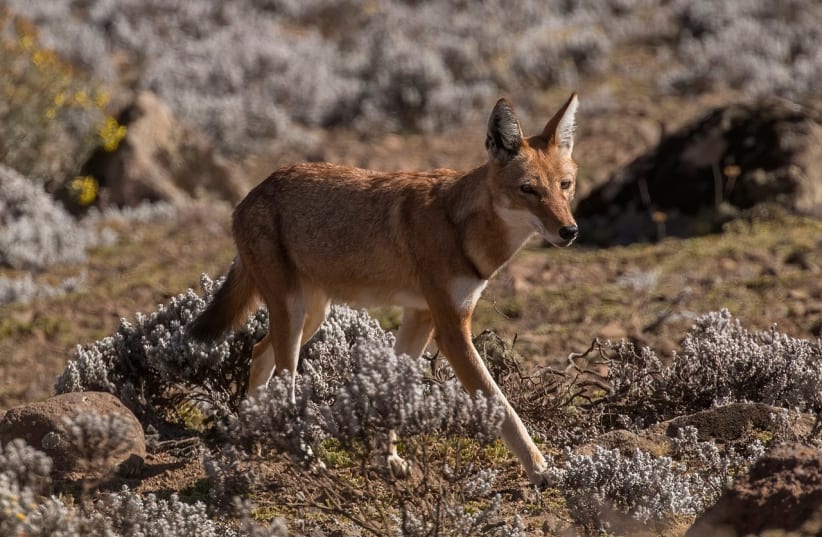The first fossil from an Ethiopian wolf in Africa – half a jawbone – has been found by experts from the Hebrew University in Jerusalem (HU) along with Spanish and Italian paleontologists from the University of California at Berkeley.
A study published on Tuesday in the journal Communications Biology under the title “The earliest Ethiopian wolf: implications for the species evolution and its future survival,” unambiguously proves that the ancient Ethiopian wolf Canis simensis existed in Africa some 1.5 million years ago and not 20,000 years ago according to previous theories that suggested the mammal arrived from EuroAsia. The discovery “constitutes the first empirical evidence that supports molecular interpretations.”
The team included Prof. Bienvenido Martínez-Navarro at the Catalan Institute of Human Paleoecology and Social Evolution and Dr. Gadi Herzlinger Dr. Tegenu Gossa and Prof. Erella Hovers of HU’s Institute of Archaeology.
Rewriting the history of the Ethiopian wolf
In 2017, the jawbone from the ancient wolf was found at the Melka Wakena site in the southeastern Ethiopian highlands about 2,300 meters above sea level. The specimen is the first and only Pleistocene fossil of this species, the team wrote. Today, this species is one of the most endangered carnivores in Africa.
“Bioclimate modeling applied to the time-frame indicated by the fossil suggested that the lineage of the Ethiopian wolf faced severe survival challenges, with consecutive drastic geographic range contractions during warmer periods. These models help to describe future scenarios for the survival of the species,” the authors continued.


“Projections ranging from most-pessimistic to most-optimistic future climatic scenarios indicate significant reduction of the already-deteriorating territories suitable for the Ethiopian wolf, increasing the threat to the specie’s future survival,” they wrote.
A census of the wolves has counted only about 500 of the animals, 200 of them adults in six groups at elevations of over 3,000 meters above sea level, posing a serious risk that the animals will become extinct.
C. simensis is more closely linked genetically with the Eurasian and North American gray wolf, Canis lupus, the North American coyote, C. latrans, the Asian jackal C. aureus and the African small golden wolf C. lupaster, than with any other African wolf such as the African painted dog, Lycaon pictus, or the African jackals (Lupulella mesomelas and Lup. adusta).
Today, the wolf is adapted to live in the alpine grassland environments, the highest Ethiopian mountains, a height of between 3,000 and 4,500 meters and with cold climates during most of the year. The wolves are believed to live in places with an annual mean temperature ranging from 6 °C to 13 °C. Also, the annual mean precipitation range is very variable (from 890 to 1639 mm.) with more average rainfall occurring during the warmest months.
By modeling its favorable climatic conditions, the team has forecast the wolves’ fate in the Ethiopian highlands over the next 80 years; since hotter temperatures are predicted, there may be a significant shrinkage of their habitat, which may drastically reduce their geographic range and fertility and bring populations to the brink of a bottleneck, the team concluded.
